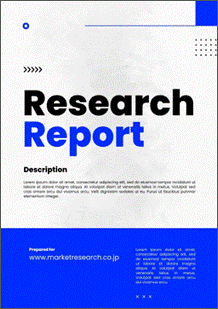 | • レポートコード:D0-MOR-AP0599 • 出版社/出版日:Mordor Intelligence / 2020年4月20日 • レポート形態:英文、PDF、141ページ • 納品方法:Eメール(受注後2-3営業日) • 産業分類:農業 |
| Single User | ¥629,000 (USD4,250) | ▷ お問い合わせ |
| Team User | ¥703,000 (USD4,750) | ▷ お問い合わせ |
| Corporate License | ¥1,110,000 (USD7,500) | ▷ お問い合わせ |
• お支払方法:銀行振込(納品後、ご請求書送付)
レポート概要
| 本調査レポートは、ライスシードの世界市場について調査・分析した資料で、ライスシードの市場概要、動向、セグメント別市場規模、地域別分析、競争状況、企業情報、市場機会分析などで構成されています。 |
Market Overview
The rice seed market was valued at USD 7,232.9 million in 2018 and is projected to reach USD 10,944.6 million in 2024, registering a CAGR of 7.35% during the forecast period. The two most popular varieties of rice grown globally are, Oryza sativa and Oryza glaberrima, of which Oryza sativa L, the most widely grown rice, is the staple food of an estimated 3.5 billion people worldwide. Rice is the staple crop for over half the world’s population. China and India, alone, account for 50% of the rice grown and consumed. Rice provides up to 50% of the dietary caloric supply for millions living in poverty in Asia, and therefore, rice is critical for food security. It is also becoming an important food staple in both Latin America and Africa. In many countries of Asia-Pacific, such as Bangladesh and the Philippines, per capita consumption of rice continues to rise across income groups in both urban and rural areas.
Scope of the Report
The report presents a wide-range analysis of the market share, size, and trends of the rice seed market. The market operates in a B-to-C level and market sizing has been done at the consumer level. It contains an analysis of the various aspects of the rice seed market, globally. The study includes the market dynamics and geographical importance of the market.
Key Market Trends
Increasing Trade in Rice Seed
Around 9% of the total rice produced is traded globally. This share has been improving over the years. Varying national laws and regulations and lack of official recognition of HYV seeds available are observed in a large number of countries. However, with increasing rice seed trade between countries, these bottlenecks are likely to reduce. Rice trade developed mainly around Asia. There has been an increase in the number of projects that facilitate rice seed trade. For instance, the project RISTE aims at developing and enabling the environment to promote seeds trade and knowledge – sharing on HYV rice seeds between India and Bangladesh. This is likely to benefit both countries.
Increasing Rice Consumption in the Asia – Pacific Region
About 90% of the world’s rice is grown in the Asia-Pacific region, which is endowed with the wet environment suitable for rice cultivation. Rice-based farming is the main economic activity for hundreds of millions of poor rural farmers in the region. China is the largest producer and consumer of rice seeds, followed by India and Vietnam. China’s National Rice Research Institute is considering tapping into the seed markets in Southeast Asia, Africa, and South America, by promoting its hybrid rice varieties over the next five years.
Competitive Landscape
In the last few years, Kaveri Seeds, Bayer CropScience, Rasi Seeds, Yuan Longping Hitech, and SL Agritech have been the most active players in terms of strategic development in the rice seed industry. Most of the companies are gaining market share by developing high–yielding, disease-resistant, and hybrid rice seed variety, suited to the local growing condition of various countries. Bayer CropScience has acquired 59% of the share in the Indian hybrid rice seed market.
Reasons to Purchase this report:
– The market estimate (ME) sheet in Excel format
– Report customization as per the client’s requirements
– 3 months of analyst support
1 INTRODUCTION
1.1 Study Deliverables
1.2 Study Assumptions
1.3 Scope of the Study
2 RESEARCH METHODOLOGY
3 EXECUTIVE SUMMARY
4 MARKET DYNAMICS
4.1 Market Overview
4.2 Market Drivers
4.3 Market Restraints
4.4 Porter’s Five Force Analysis
4.4.1 Bargaining Power of Suppliers
4.4.2 Bargaining Power of Buyers
4.4.3 Threat of Substitute Products
4.4.4 Threat of New Entrants
4.4.5 Competitive Rivalry
5 MARKET SEGMENTATION
5.1 Geography
5.1.1 North America
5.1.1.1 United States
5.1.1.2 Canada
5.1.1.3 Mexico
5.1.1.4 Rest of North America
5.1.2 Europe
5.1.2.1 Germany
5.1.2.2 United Kingdom
5.1.2.3 France
5.1.2.4 Spain
5.1.2.5 Italy
5.1.2.6 Rest of Europe
5.1.3 Asia – Pacific
5.1.3.1 China
5.1.3.2 Japan
5.1.3.3 India
5.1.3.4 Pakistan
5.1.3.5 Thailand
5.1.3.6 Vietnam
5.1.3.7 Rest of Asia – Pacific
5.1.4 South America
5.1.4.1 Brazil
5.1.4.2 Argentina
5.1.4.3 Rest of South America
5.1.5 Africa
5.1.5.1 Egypt
5.1.5.2 South Africa
5.1.5.3 Rest of Africa
6 COMPETITIVE LANDSCAPE
6.1 Most Adopted Strategies
6.2 Market Share Analysis
6.3 Company Profiles
6.3.1 Syngenta AG
6.3.2 Bayer CropScience SE
6.3.3 Corteva Agriscience
6.3.4 Longping High-Tech
6.3.5 SL Agritech
6.3.6 UPL ( Advanta Seeds)
6.3.7 Nuziveedu
6.3.8 Kaveri Seeds
6.3.9 Mahyco Seeds
6.3.10 RiceTec Inc.
6.3.11 China National Seed group
6.3.12 Advanced Chemical Indutries
6.3.13 Hefei Fengle Seed Co. Ltd
7 MARKET OPPORTUNITIES AND FUTURE TRENDS